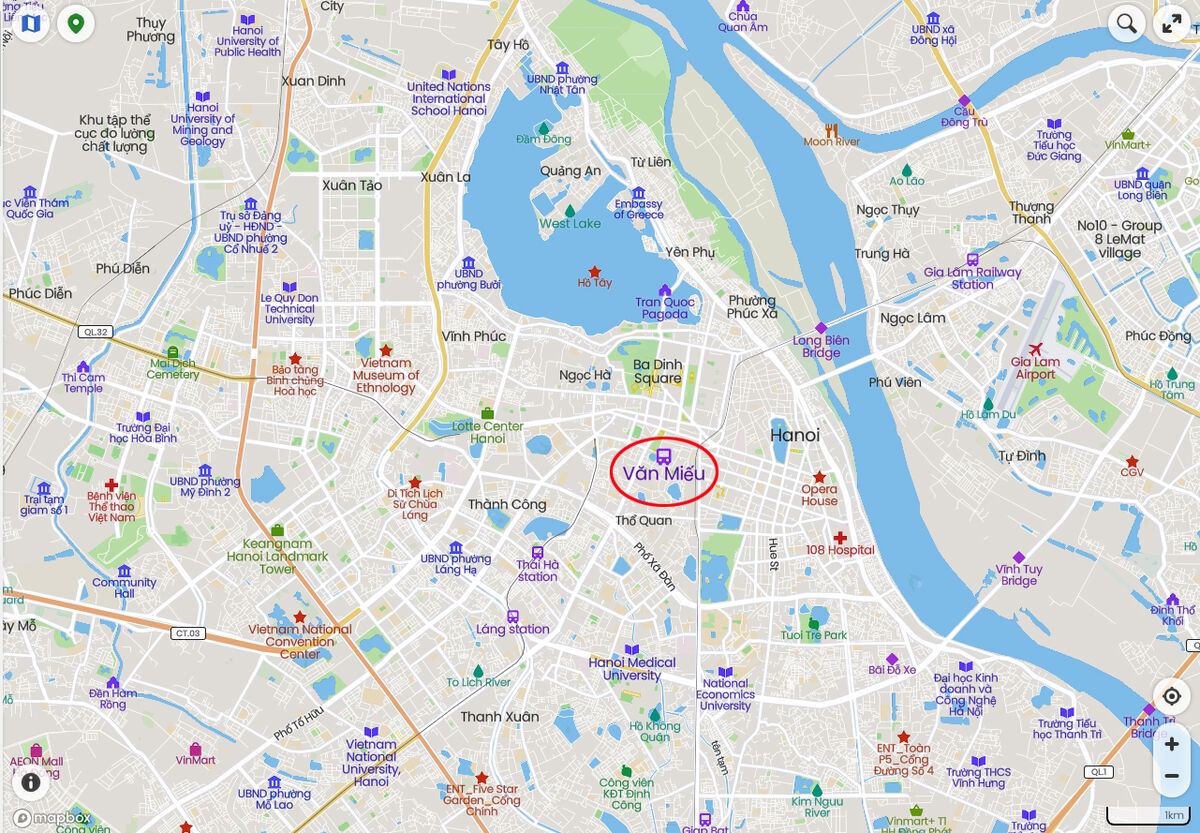Vietnam: Hanoi Part 2 - The Temple of Literature
Aug 22, 2022 15:08:17 #
On our first day in Hanoi, we enjoyed a sightseeing tour of the city which included a stop at The Temple of Literature.
Văn Miếu (Vietnamese: Văn Miếu, Hán tự: 文廟) is a temple dedicated to Confucius in Hanoi, northern Vietnam. The temple also hosts the Imperial Academy (Quốc Tử Giám, 國子監), Vietnam's first national university. The temple was built in 1070 at the time of Emperor Lý Thánh Tông. It is one of several temples in Vietnam which is dedicated to Confucius, sages and scholars. The temple is located to the south of the Imperial Citadel of Thăng Long. The various pavilions, halls, statues and stelae of doctors are places where offering ceremonies, study sessions and the strict exams of the Đại Việt took place. The temple is featured on the back of the 100,000 Vietnamese đồng banknote. Just before the Vietnamese New Year celebration Tết, calligraphists will assemble outside the temple and write wishes in Chữ Hán. The art works are given away as gifts or are used as home decorations for special occasions.
The temple was built in 1070 and was reconstructed during the Trần dynasty (1225–1400) and in the subsequent dynasties. For nearly two centuries, despite wars and disasters, the temple has preserved ancient architectural styles of many dynasties as well as precious relics. Major restorations have taken place in 1920, 1954 and 2000.
"In the autumn of the year Canh Tuat, the second year of Than Vu (1070), in the 8th lunar month, during the reign of King Lý Thánh Tông, the Văn Miếu was built. The statues of Confucius, his four best disciples: Yan Hui (Nhan Uyên), Zengzi (Tăng Sâm), Zisi (Tử Tư), and Mencius (Mạnh Tử), as well as the Duke of Zhou (Chu Công), were carved and 72 other statues of Confucian scholars were painted. Ceremonies were dedicated to them in each of the four seasons. The Crown Princes studied here."
In 1076, Vietnam's first university, the "Quốc Tử Giám" or Imperial Academy, was established within the temple during the reign of Lý Nhân Tông to educate Vietnam's bureaucrats, nobles, royalty, and other members of the elite. The university remained open from 1076 to 1779. In 1802, the Nguyễn dynasty's monarchs founded the Huế capital where they established a new imperial academy. The academy at the Hanoi temple lost its prominence and became a school of the Hoài Đức District.
Under the French protectorate, the Văn Miếu - Quốc Tử Giám was registered as a Monument historique in 1906. During the period of 1945–1954, the French demolished parts of the temple to make additional room for the Saint Paul Hospital since hospital capacity was full during times of war. Campaigns of restoration were pursued in 1920 and 1947 under the responsibility of École française d'Extrême-Orient (French School of the Far East).
The temple layout is similar to that of the temple at Qufu, Shandong, Confucius' birthplace. It covers an area of over 54,000 square metres (580,000 sq ft), including the Văn lake, Giám park and the interior courtyards which are surrounded by a brick wall. In front of the Great Gate are four tall pillars. On either side of the pillars are two stelae commanding horsemen to dismount.
The gate opens onto three pathways which continues through the complex. The centre path was reserved for the monarch and above the center path there is a big bronze bell, The path to the left is for the administrative Mandarins and the path to the right is for military Mandarins. The interior of the site is divided into five courtyards. The first two courtyards are quiet areas with ancient trees and trimmed lawns, where scholars would relax away from the bustle of the outside world.
The bell located above the main gate was used to signify that an important person was coming through and was added to the Văn Miếu in the 19th century. The bell was made out of Bronze and could only be touched by monks. On the bell several patterns can be found including an outline of a phoenix, which represents beauty, and a dragon, which represents power. Both of these symbols are used to represent the Emperor and Queen. A bell can be found in all of the pagodas in Vietnam.
Doctor's stone tablets
The construction of the stone stelae began in 1484 under the Emperor Lê Thánh Tông. He erected 116 steles of carved blue stone turtles with elaborate motifs to honour talent and encourage study. The Turtle (Quy, 龜) is one of the nation's four holy creatures - the others are the Dragon (Long, 龍), the Unicorn (Ly, 麟) and the Phoenix (Phượng, 鳳). The turtle is a symbol of longevity and wisdom. The shape and size of the turtle changed with the passage of time.
The doctors' steles are a valuable historical resource for the study of culture, education and sculpture in Vietnam. 82 stelae remain. They depict the names and birthplaces of 1307 graduates of 82 triennial royal exams. Between 1442 and 1779, eighty-one exams were held by the Lê dynasty and one was held by the Mạc dynasty. The ancient Chinese engravings on each stele praise the merits of the monarch and cite the reason for holding royal exams. They also record the mandarins who were tasked with organising the exams. It used to be common to rub the stone turtles' heads, but now there is a fence that is meant to prevent people from doing this in order to preserve the turtles.
They are a valuable historical resource for the study of philosophy history, culture, education, society and sculpture in Vietnam. The stelae were inscribed on UNESCO's Memory of the World Register in 2011.
Study at the Imperial Academy
The organization of instruction and learning at the Imperial Academy began in 1076 under the Lý dynasty and was further developed in the 15th century under the Le dynasty. The academy was headed by a rector (Tế tửu) and a vice-rector (Tư nghiệp). The professors of the academy held different titles: Giáo thụ, Trực giảng, Trợ giáo and Bác sĩ.
Many students lived and studied at the Temple. Most students (Giám sinh) had passed the regional exam (Hương Examination - Thi Hương) before enrolling at the academy. During the course of study at the academy, the students focused on discussion of literature and wrote poetry as well. The students learned Chinese, Chinese philosophy, and Chinese history. They had textbooks printed on paper which were in both Chinese and Vietnamese. They read The Four Books (Tứ thư, 四書): "The Great Study" (Đại Học, 大學), "The Golden Means" (Trung Dung, 中庸), "The Analects" (Luận Ngữ, 論語) and "Mencius" (Mạnh Tử, 孟子); Five Pre-Confucian Classics (Ngũ Kinh, 五經): "Book of Odes (Kinh Thi, 詩經), "Book of Annals" (Kinh Thư, 書經), "Book of Rites" (Kinh Lễ, 禮記), "Book of Change" (Kinh Dịch, 易經) and "Book of Spring and Autumn" (Kinh Xuân Thu, 春秋); ancient poetry and Chinese history among others.
The students enrolled for three to seven years. They had minor tests each month and four major tests per year. Success in the exams, certified by the Ministry of Rites (Bộ Lễ, 禮部) qualified them to sit the national exam (Hội Examination - Thi Hội). Success at the Hội Examination qualified the student to sit the royal exam, the Đình Examination (Thi Đình), held at court. At this exam, the monarch himself posed the questions, responded to the candidate's answer and then ranked those who passed into different grades. The Imperial Academy was the largest centre in the country.
https://en.wikipedia.org/wiki/Temple_of_Literature,_Hanoi
For additional images of Hanoi, Please see my previous post:
https://www.uglyhedgehog.com/t-749364-1.html
I hope you enjoy these!
Mark
Văn Miếu (Vietnamese: Văn Miếu, Hán tự: 文廟) is a temple dedicated to Confucius in Hanoi, northern Vietnam. The temple also hosts the Imperial Academy (Quốc Tử Giám, 國子監), Vietnam's first national university. The temple was built in 1070 at the time of Emperor Lý Thánh Tông. It is one of several temples in Vietnam which is dedicated to Confucius, sages and scholars. The temple is located to the south of the Imperial Citadel of Thăng Long. The various pavilions, halls, statues and stelae of doctors are places where offering ceremonies, study sessions and the strict exams of the Đại Việt took place. The temple is featured on the back of the 100,000 Vietnamese đồng banknote. Just before the Vietnamese New Year celebration Tết, calligraphists will assemble outside the temple and write wishes in Chữ Hán. The art works are given away as gifts or are used as home decorations for special occasions.
The temple was built in 1070 and was reconstructed during the Trần dynasty (1225–1400) and in the subsequent dynasties. For nearly two centuries, despite wars and disasters, the temple has preserved ancient architectural styles of many dynasties as well as precious relics. Major restorations have taken place in 1920, 1954 and 2000.
"In the autumn of the year Canh Tuat, the second year of Than Vu (1070), in the 8th lunar month, during the reign of King Lý Thánh Tông, the Văn Miếu was built. The statues of Confucius, his four best disciples: Yan Hui (Nhan Uyên), Zengzi (Tăng Sâm), Zisi (Tử Tư), and Mencius (Mạnh Tử), as well as the Duke of Zhou (Chu Công), were carved and 72 other statues of Confucian scholars were painted. Ceremonies were dedicated to them in each of the four seasons. The Crown Princes studied here."
In 1076, Vietnam's first university, the "Quốc Tử Giám" or Imperial Academy, was established within the temple during the reign of Lý Nhân Tông to educate Vietnam's bureaucrats, nobles, royalty, and other members of the elite. The university remained open from 1076 to 1779. In 1802, the Nguyễn dynasty's monarchs founded the Huế capital where they established a new imperial academy. The academy at the Hanoi temple lost its prominence and became a school of the Hoài Đức District.
Under the French protectorate, the Văn Miếu - Quốc Tử Giám was registered as a Monument historique in 1906. During the period of 1945–1954, the French demolished parts of the temple to make additional room for the Saint Paul Hospital since hospital capacity was full during times of war. Campaigns of restoration were pursued in 1920 and 1947 under the responsibility of École française d'Extrême-Orient (French School of the Far East).
The temple layout is similar to that of the temple at Qufu, Shandong, Confucius' birthplace. It covers an area of over 54,000 square metres (580,000 sq ft), including the Văn lake, Giám park and the interior courtyards which are surrounded by a brick wall. In front of the Great Gate are four tall pillars. On either side of the pillars are two stelae commanding horsemen to dismount.
The gate opens onto three pathways which continues through the complex. The centre path was reserved for the monarch and above the center path there is a big bronze bell, The path to the left is for the administrative Mandarins and the path to the right is for military Mandarins. The interior of the site is divided into five courtyards. The first two courtyards are quiet areas with ancient trees and trimmed lawns, where scholars would relax away from the bustle of the outside world.
The bell located above the main gate was used to signify that an important person was coming through and was added to the Văn Miếu in the 19th century. The bell was made out of Bronze and could only be touched by monks. On the bell several patterns can be found including an outline of a phoenix, which represents beauty, and a dragon, which represents power. Both of these symbols are used to represent the Emperor and Queen. A bell can be found in all of the pagodas in Vietnam.
Doctor's stone tablets
The construction of the stone stelae began in 1484 under the Emperor Lê Thánh Tông. He erected 116 steles of carved blue stone turtles with elaborate motifs to honour talent and encourage study. The Turtle (Quy, 龜) is one of the nation's four holy creatures - the others are the Dragon (Long, 龍), the Unicorn (Ly, 麟) and the Phoenix (Phượng, 鳳). The turtle is a symbol of longevity and wisdom. The shape and size of the turtle changed with the passage of time.
The doctors' steles are a valuable historical resource for the study of culture, education and sculpture in Vietnam. 82 stelae remain. They depict the names and birthplaces of 1307 graduates of 82 triennial royal exams. Between 1442 and 1779, eighty-one exams were held by the Lê dynasty and one was held by the Mạc dynasty. The ancient Chinese engravings on each stele praise the merits of the monarch and cite the reason for holding royal exams. They also record the mandarins who were tasked with organising the exams. It used to be common to rub the stone turtles' heads, but now there is a fence that is meant to prevent people from doing this in order to preserve the turtles.
They are a valuable historical resource for the study of philosophy history, culture, education, society and sculpture in Vietnam. The stelae were inscribed on UNESCO's Memory of the World Register in 2011.
Study at the Imperial Academy
The organization of instruction and learning at the Imperial Academy began in 1076 under the Lý dynasty and was further developed in the 15th century under the Le dynasty. The academy was headed by a rector (Tế tửu) and a vice-rector (Tư nghiệp). The professors of the academy held different titles: Giáo thụ, Trực giảng, Trợ giáo and Bác sĩ.
Many students lived and studied at the Temple. Most students (Giám sinh) had passed the regional exam (Hương Examination - Thi Hương) before enrolling at the academy. During the course of study at the academy, the students focused on discussion of literature and wrote poetry as well. The students learned Chinese, Chinese philosophy, and Chinese history. They had textbooks printed on paper which were in both Chinese and Vietnamese. They read The Four Books (Tứ thư, 四書): "The Great Study" (Đại Học, 大學), "The Golden Means" (Trung Dung, 中庸), "The Analects" (Luận Ngữ, 論語) and "Mencius" (Mạnh Tử, 孟子); Five Pre-Confucian Classics (Ngũ Kinh, 五經): "Book of Odes (Kinh Thi, 詩經), "Book of Annals" (Kinh Thư, 書經), "Book of Rites" (Kinh Lễ, 禮記), "Book of Change" (Kinh Dịch, 易經) and "Book of Spring and Autumn" (Kinh Xuân Thu, 春秋); ancient poetry and Chinese history among others.
The students enrolled for three to seven years. They had minor tests each month and four major tests per year. Success in the exams, certified by the Ministry of Rites (Bộ Lễ, 禮部) qualified them to sit the national exam (Hội Examination - Thi Hội). Success at the Hội Examination qualified the student to sit the royal exam, the Đình Examination (Thi Đình), held at court. At this exam, the monarch himself posed the questions, responded to the candidate's answer and then ranked those who passed into different grades. The Imperial Academy was the largest centre in the country.
https://en.wikipedia.org/wiki/Temple_of_Literature,_Hanoi
For additional images of Hanoi, Please see my previous post:
https://www.uglyhedgehog.com/t-749364-1.html
I hope you enjoy these!
Mark

(Download)
Turtle Steles with the names of those successful at the royal exams
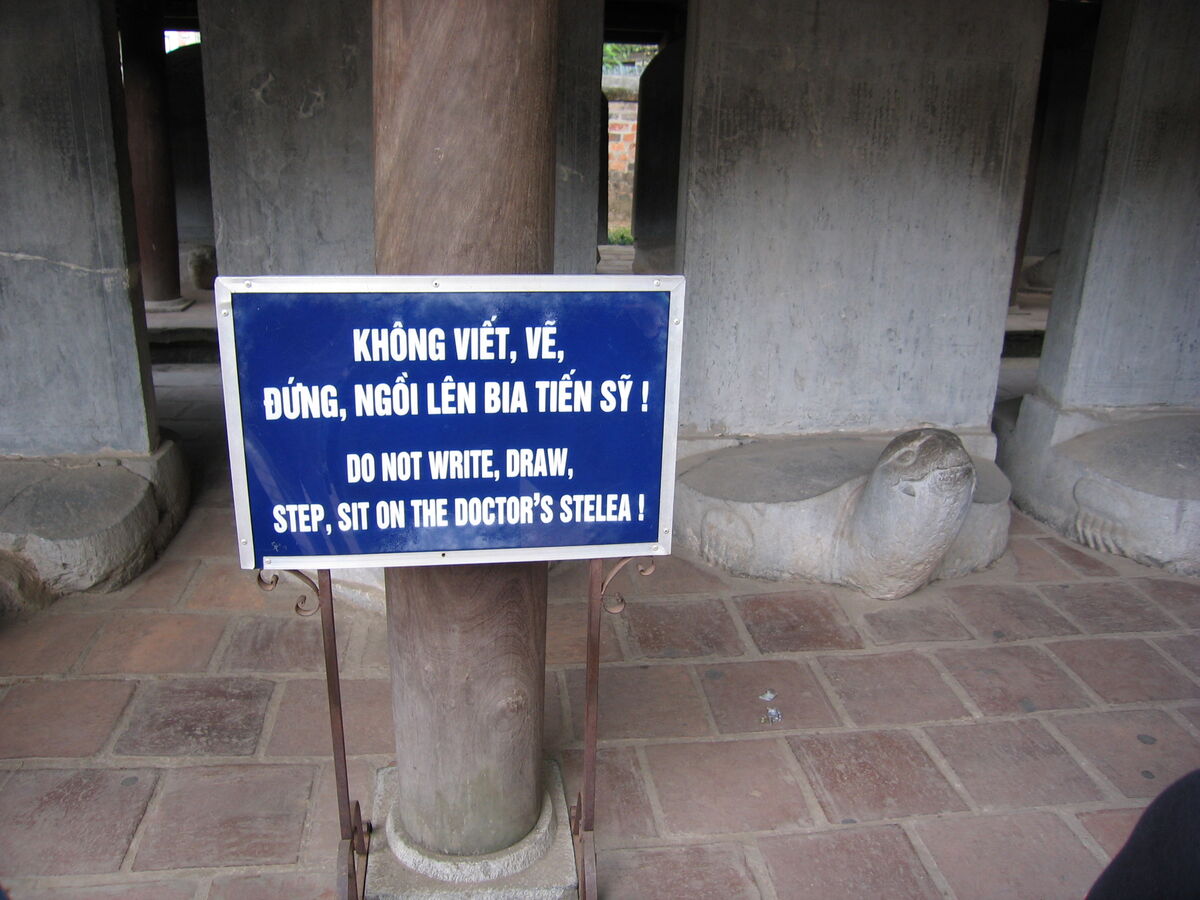
(Download)
Third Courtyard of the temple with the Thien Quang well and the red Khue Van pavilion
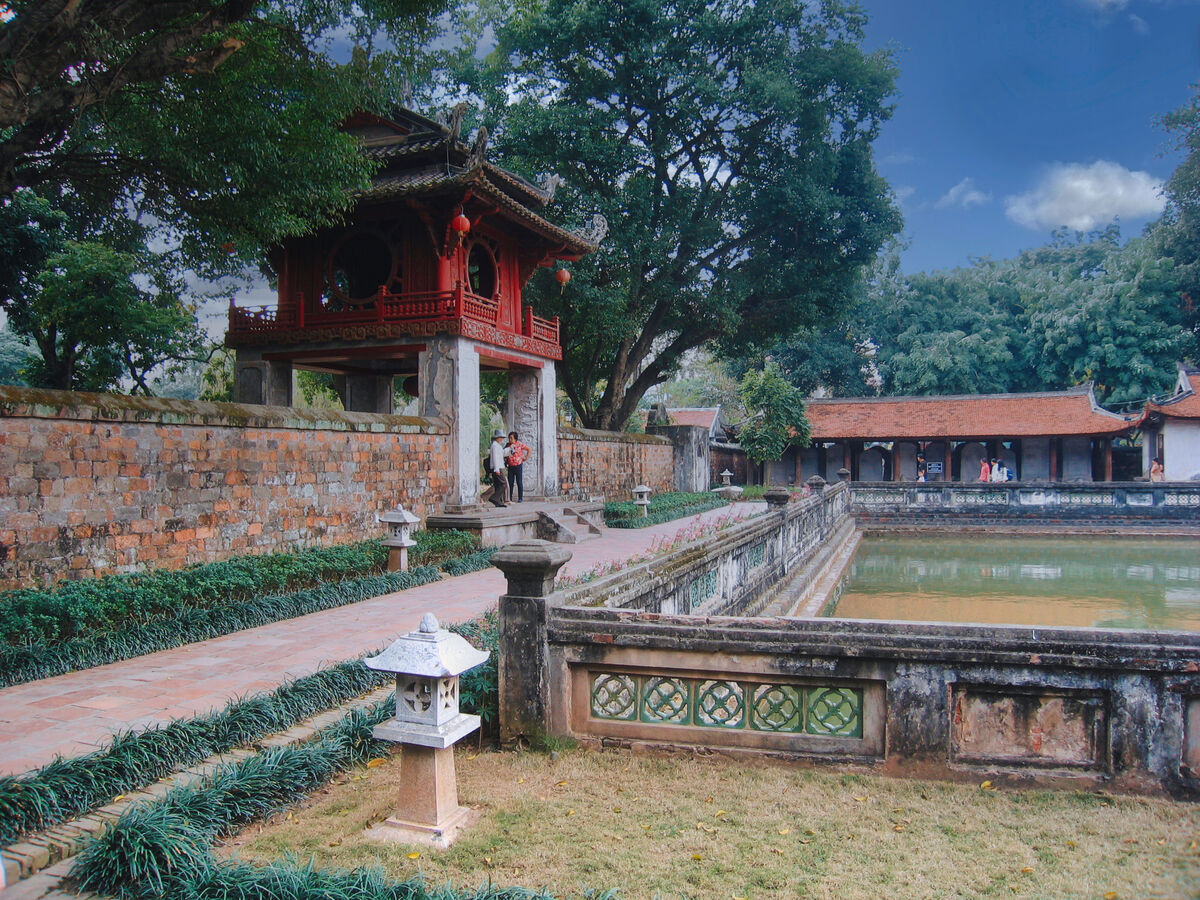
(Download)

(Download)
Altars to Confucius and his disciples
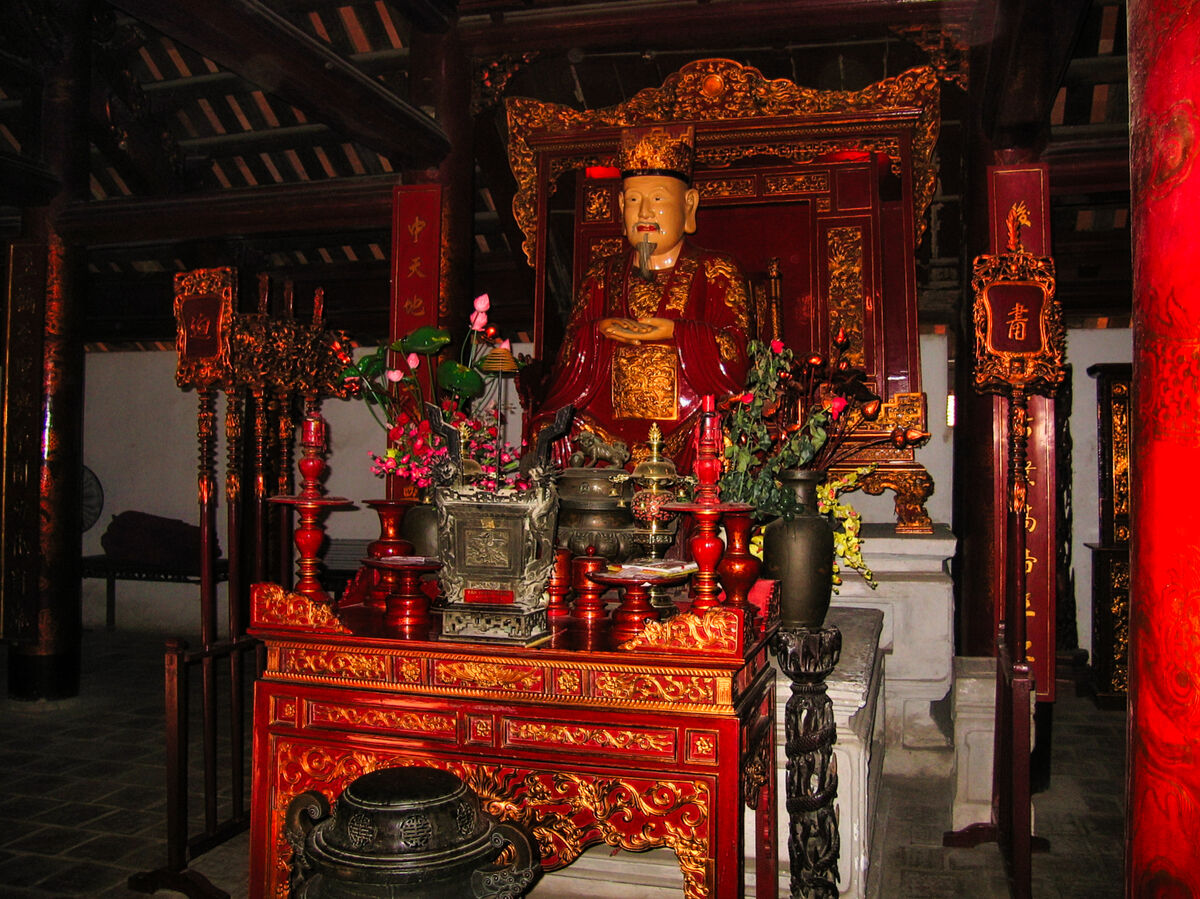
(Download)

(Download)
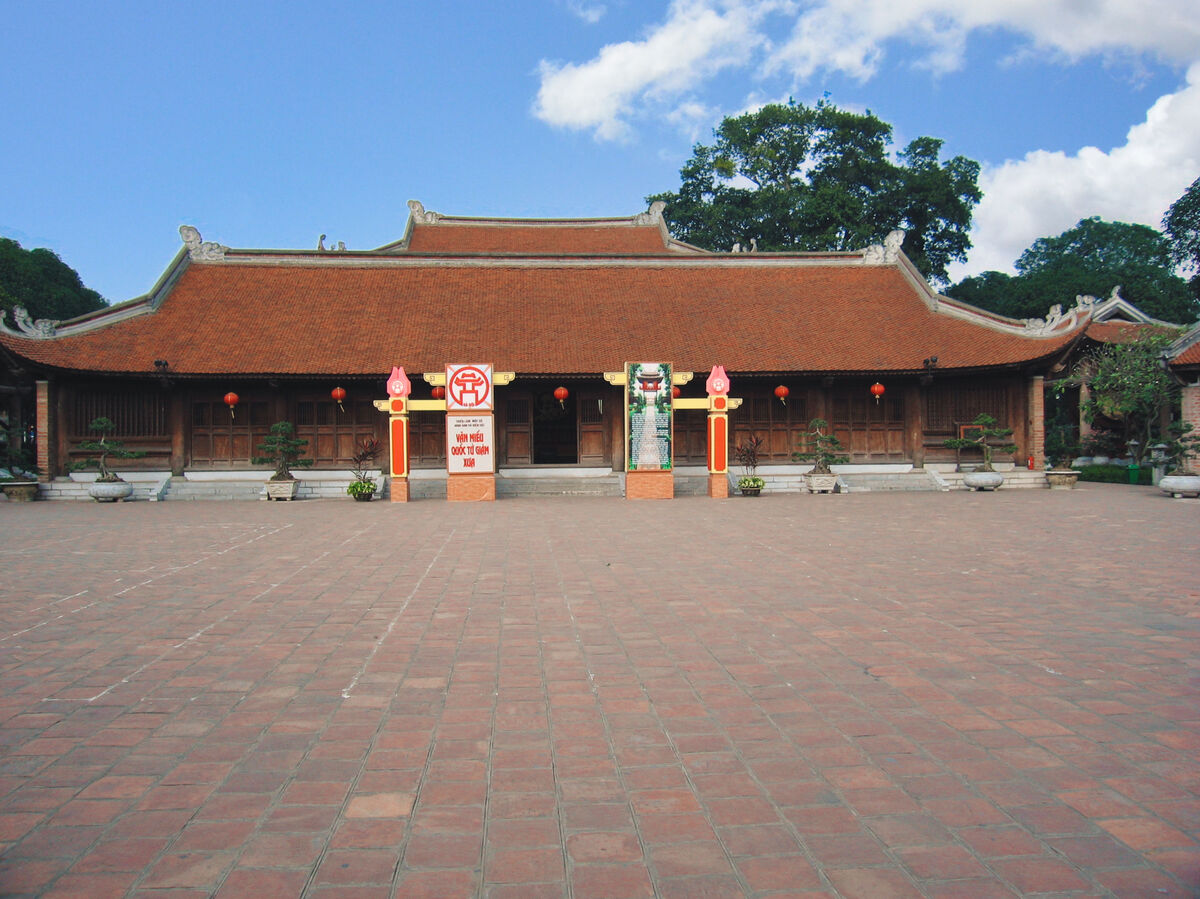
(Download)
Fifth Courtyard, grounds of the imperial academy
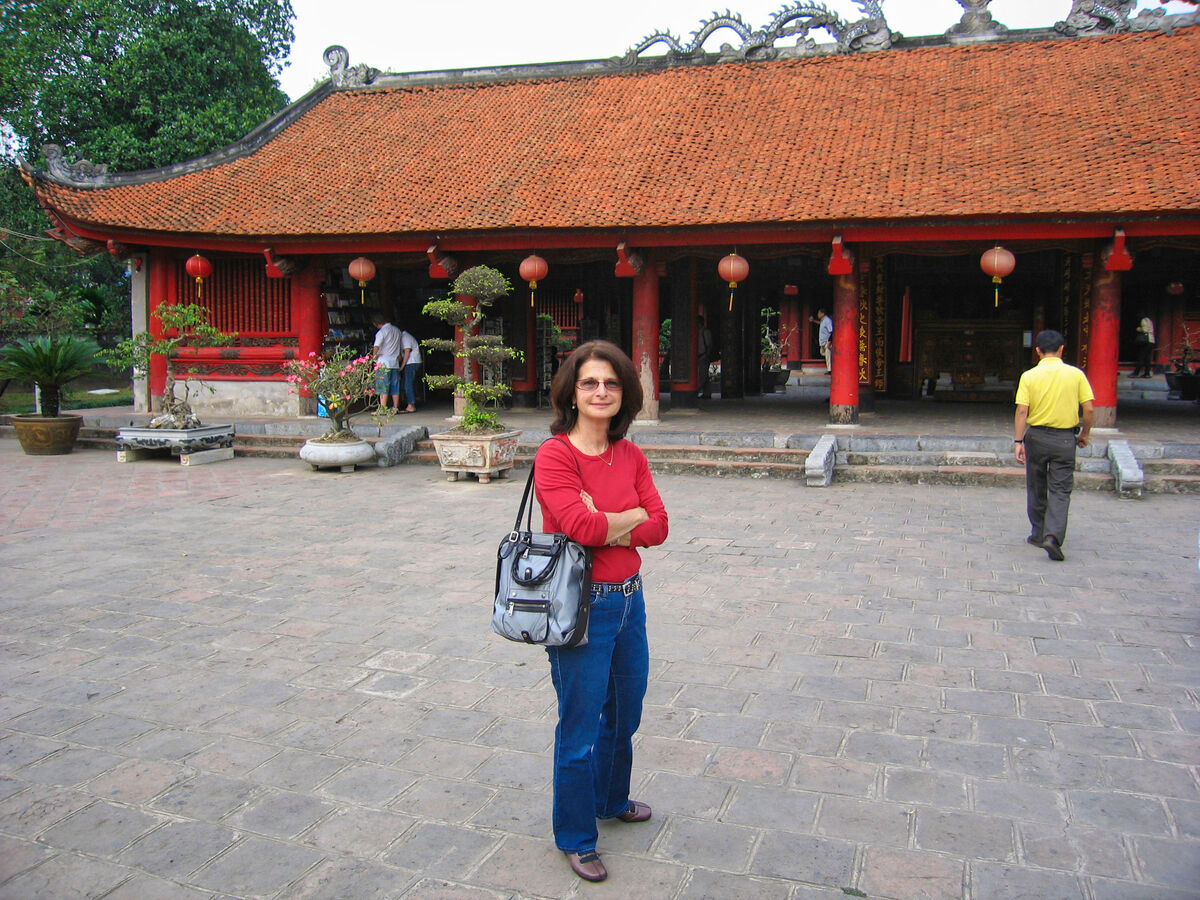
(Download)

(Download)
Taken from the tour bus window on our way to the Quan Than Buddhist Temple
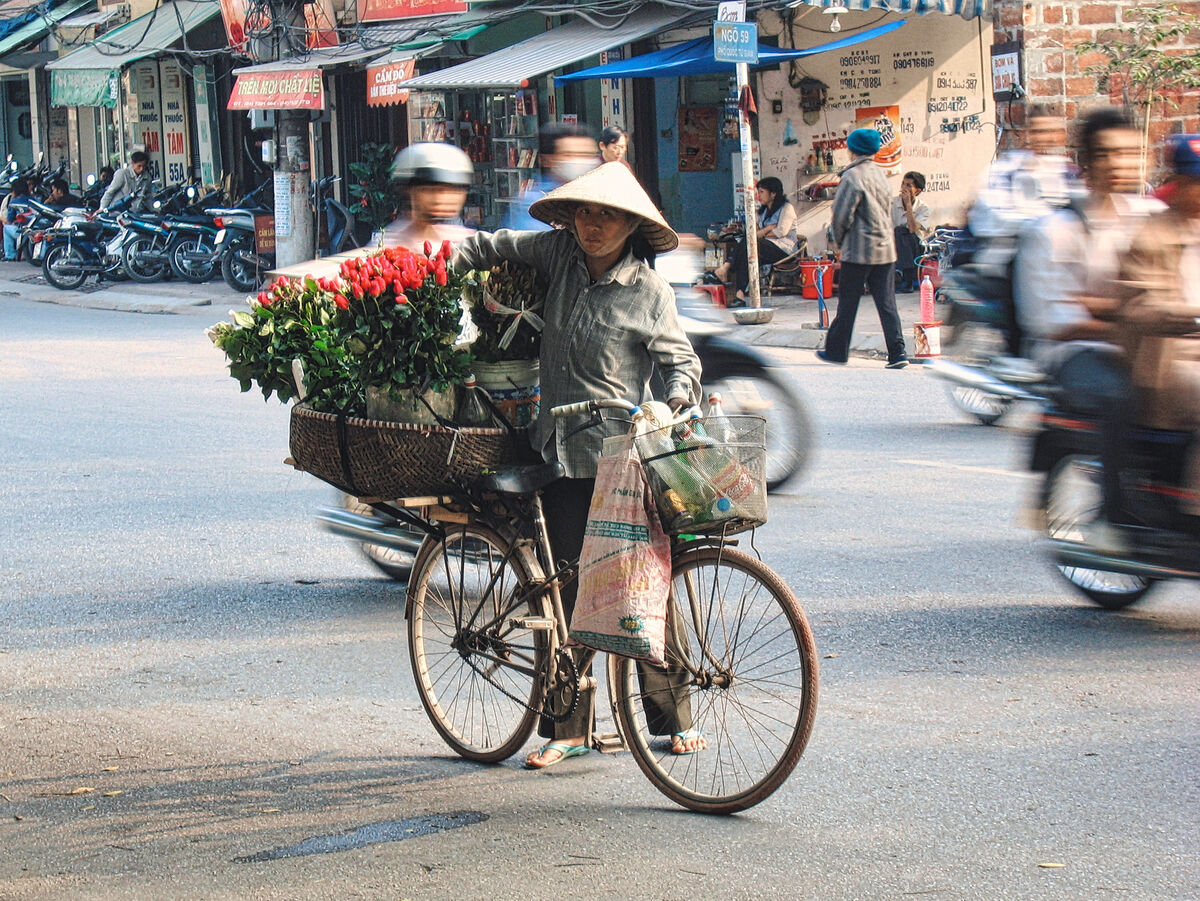
(Download)
Aug 22, 2022 15:09:13 #
Aug 22, 2022 15:53:26 #
Aug 22, 2022 16:14:39 #
Aug 22, 2022 16:19:13 #
JohnnyDW
Loc: Richmond and Sunshine Valley British Columbia
Wow, beautifully done Mark! Almost as good as being there as you capture the flavour of your visits.
The extensive detailed history really finishes it off nicely.
I have photographed many temples and historical sites in my travels (mostly Indonesia and Japan)
and regret now that I didn't take the time to do the research as you have done to complete the packages.
Thanks for posting.
The extensive detailed history really finishes it off nicely.
I have photographed many temples and historical sites in my travels (mostly Indonesia and Japan)
and regret now that I didn't take the time to do the research as you have done to complete the packages.
Thanks for posting.
Aug 22, 2022 16:48:33 #
srfmhg wrote:
On our first day in Hanoi, we enjoyed a sightseein... (show quote)
Bedazzling shots 🏆🔥⭐🔥🏆
Aug 22, 2022 18:13:28 #
Aug 22, 2022 18:13:51 #
Aug 22, 2022 18:16:09 #
JohnnyDW wrote:
Wow, beautifully done Mark! Almost as good as being there as you capture the flavour of your visits.
The extensive detailed history really finishes it off nicely.
I have photographed many temples and historical sites in my travels (mostly Indonesia and Japan)
and regret now that I didn't take the time to do the research as you have done to complete the packages.
Thanks for posting.
The extensive detailed history really finishes it off nicely.
I have photographed many temples and historical sites in my travels (mostly Indonesia and Japan)
and regret now that I didn't take the time to do the research as you have done to complete the packages.
Thanks for posting.
Thanks so much for your kind comments Johnny. Doing the research years later as I have done in this case really helps me to re-live the trip.
Aug 22, 2022 18:16:43 #
joecichjr wrote:
Bedazzling shots 🏆🔥⭐🔥🏆
Thanks very much Joe. So glad you liked them.
Aug 23, 2022 06:59:53 #
srfmhg wrote:
On our first day in Hanoi, we enjoyed a sightseein... (show quote)
Another fantastic set!!!
Aug 23, 2022 08:36:46 #
Aug 23, 2022 08:53:19 #
Aug 23, 2022 08:53:26 #
Aug 23, 2022 08:59:46 #
If you want to reply, then register here. Registration is free and your account is created instantly, so you can post right away.

